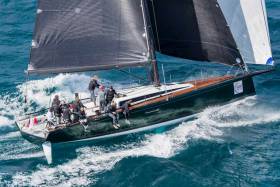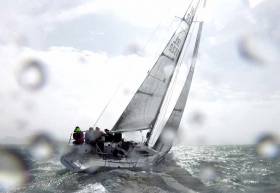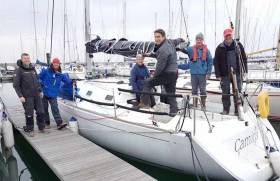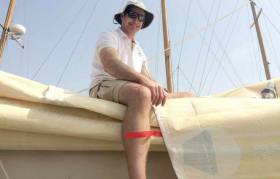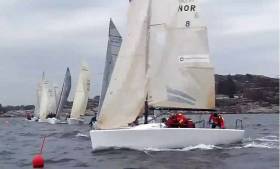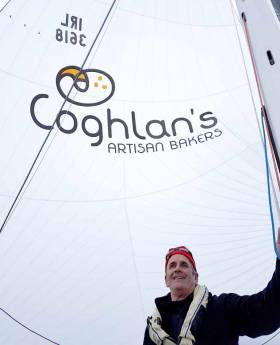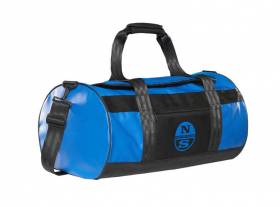Displaying items by tag: North Sails Ireland
Shane Hughes from North Sails Ireland is the sailing team manager and a trimmer onboard the Swiss Club Swan 50 ‘Mathilde’.
Hughes has been working with the team since the boat arrived new from Nautor in early 2017. The project is exciting, a brand new One Design 50 footer, designed by Juan Kouyoumdjian (Multiple Volvo Ocean Race winning designer) that has gained instant traction with 20+ boats already sold.
Monaco was the first event in the Swan One Design Mediterranean League and while all the teams were dusting off the boats for the first time in 2018 the competition was extremely close with multiple place changes making for compelling racing. Mathilde lost out on victory by a single point in the end but to very deserving victors in ‘Cuordileone’. Result here
All 5 CS 50’s at the event used exclusively North Sails Inventories, with 3Di Raw used for upwind sails and a mixture of North Sails laminates and Nylon downwind.
Mathilde took delivery of a new J2 (medium Jib) and A1 (Light Asymmetric) for the event. The development process within the North Sails group is ongoing in classes like this, with multiple North Sails representatives competing in the class, so both sails had significant upgrades applied from the previous years specification. Hughes says this kind of internal collaboration allows them to push design limits and refine material choices and cosmetics detailing.
The next class event is Palma Vela in Early May where up to 10 teams are expected which will add even more to the competition and close racing.
North Sails Ireland Team Racing at ISORA, Howth & Kinsale
The North Sails Ireland team of Nigel Young, Maurice 'Prof' O'Connell and Shane Hughes (scroll down for sailmaker details below) were busy at three sailing events last weekend, each winning races with clients on the Irish Sea, Howth and Kinsale.
As the sailing season gets into full swing, Shane Hughes was a part of Frank Whelan's ISORA winning team on "Eleuthera" taking victory overall and in Division 0. Shane was trialling a new North Sails 3Di Code 2 jib that day and says 'the boat flew upwind'. Read the Afloat.ie report of ISORA's first race of 2018 here.
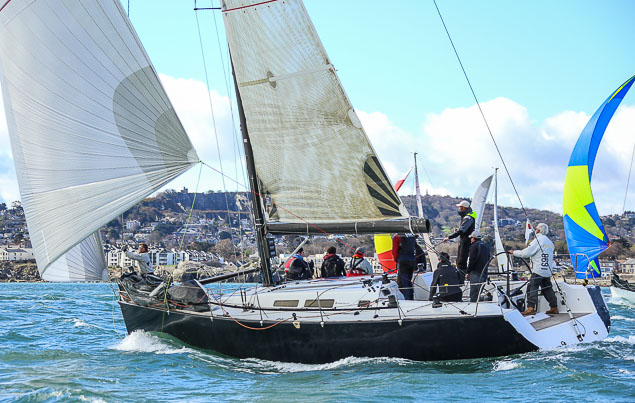 Shane Hughes is the spinnaker trimmer on the ISORA winner, the Grand Soleil 44, Eleuthera above and below an onboard view of the new J2 medium jib used in the race win
Shane Hughes is the spinnaker trimmer on the ISORA winner, the Grand Soleil 44, Eleuthera above and below an onboard view of the new J2 medium jib used in the race win

Howth Yacht Club Spring Warmer
Nigel Young raced on Mike Evans half tonner "The Big Picture" on Saturday. Nigel was trialling a new 3Di mainsail, Code 2 jib and SuperLite Code S1.5 spi and took a 2nd and 3rd in their class.
 Mike Evans half–tonner, 'The Big Picture' flying their new 3Di upwind sails
Mike Evans half–tonner, 'The Big Picture' flying their new 3Di upwind sails
Prof was on the water in Howth also providing coaching support from the RIB. Prof's HYC coaching movie is below:-
Kinsale Yacht Club April League
On Sunday, both Prof and Nigel were racing in Kinsale Yacht Club's April Series.
In owner Conor Phelan's absence, Prof steered "Jump Juice" to victory in Race one but a headfoil problem dropped the team down the standings in Race two.
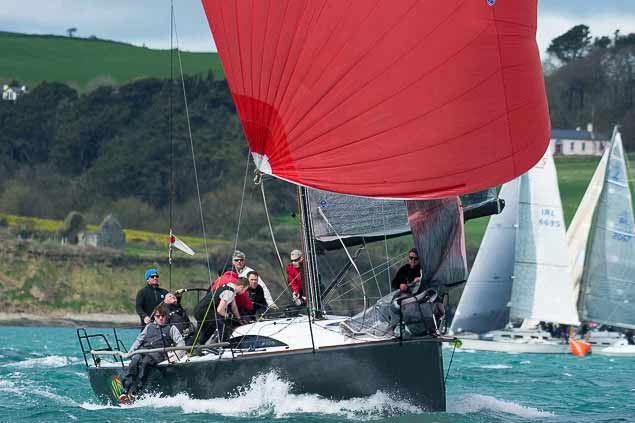 Prof steered Jump Juice in Kinsale. Photo: Bob Bateman
Prof steered Jump Juice in Kinsale. Photo: Bob Bateman
Nigel was racing aboard Denis Murphy's Grand Soleil 40 "Neulargo" and they pounced on the "Jump Juice" headfoil issue to win race two, following up on their second in race one.
 "Neulargo" flying her new North Sails 3Di Endurance mainsail and Sk75 S2 kite. Photo: Bob Bateman
"Neulargo" flying her new North Sails 3Di Endurance mainsail and Sk75 S2 kite. Photo: Bob Bateman
Read Afloat.ie's report of the April League with lots more photos by Bob Bateman here.
Howth Yacht Club Spring Warmer Series Gets On Water Coaching From North Sails Ireland (VIDEO)
North Sails Ireland sailmakers Shane Hughes and Maurice "Prof" O'Connell were afloat in the coaching RIB at the first day of the Key Capital sponsored Spring Warmer Series in HYC on April 14th.
Also in Howth was NS colleague Nigel Young who was on Mike Evans half-tonner "The Big Picture". They were trialling both new 3Di upwind sails and a magnificent new S4 kite logo'd up by North Graphics.
16–20 knots southerly breeze blew with a short chop kicked up due to the ebb tide. Shane and Prof got around to all boats on the water, offering advice on rig setup, sail trim, helming technique and crew work.
They shot plenty of live video for use in the de-brief afterwards in HYC. Shane's drone took to the sky too for one start which was enthusiastically received!
See below some short video clips of the day:
Start Race 1
J97 "Lambay Rules" Upwind
Maximus Broach
Corby 27 Kodachi Downwind in 20 Knots TWS
Drone Footage
The North Sails Ireland team will be on the water again in HYC next weekend for Day 2!
Chilly Beneteau 31.7 North Sails Ireland 3Di Sea Trial Bears Fruit for Camira & Crew
North Sails Ireland's Maurice "Prof" O'Connell had a chilly evening's test sail on Friday April 13th, unlucky 13th for Prof, as he had no foul weather gear!
The occasion was the unveiling of new sails on the Beneteau First 31.7 "Camira" in anticipation of the new DBSC season starting later this month.
Camira's new mainsail and light/medium no.1 genoa were both designed and constructed using North proprietary '3Di' technology.
 Camira's new 3Di Light Medium No. 1 Genoa on test on Dublin Bay
Camira's new 3Di Light Medium No. 1 Genoa on test on Dublin Bay
Dublin Bay Sailing Club skipper Peter Beamish, his team and Prof fitted the sails, set the correct mainsail batten tensions using built-in "wingtip" adjusters and headed out on a light airs Dublin Bay evening.
Camira's new mainsail and light/medium no. 1 genoa were both designed and constructed using North proprietary "3Di" technology
Control systems (halyards, jib car positions, outhaul, cunningham) and rig adjustments (cap shrouds, lower shrouds, forestay) were adjusted with plenty of lively debate onboard.
Commenting after the session on "Camira", skipper Beamish said "Thank you, Prof for a fascinating few hours and see you next Friday" (when a further session with the North Sails man is planned).
Kinsale sailor and naval architect Jeremy Elliott is heading up North Sails Design Services giving him a key role in making the latest technology available to the North Technology Group companies and their clients. Based in Gosport, he’s worked on everything from dinghies to the America’s Cup, Volvo Ocean Race, and super yacht projects.
Afloat.ie readers will recall Elliott was responsible for the sail programme on Eamon Rohan's Class Zero Blondie campaigns and more recently Elliott looked after Conor Phelan's Jump Juice programme.
Elliott has been involved in many of the North Sails Ireland projects over the years and he was a regular crew member on Rohan's successful Blondie teams.
After completing a Masters in Naval Architecture at the University of Southampton, Elliott worked with the Wolfson Unit for Marine Technology and several America’s Cup teams before joining the North Sails design team in 2005. The bulk of his work is in performance simulation and structural assessment, to ensure North clients get the most from our state-of-the-art research capabilities. His breadth of experience gives him a solid grasp of both the technology and reality of modern yacht design, backed up by as much time on the water as the job allows.
The North Design Services headed up by Elliott is a team of sail design-engineers who specialise in optimising a yacht’s total performance
In his down time, Elliott sails International 14s. He has recently taken to kite-boarding for the days when all other sailing is blown off. 'He is a fantastic asset for North Sails Ireland to use and its always good to work with him and fill him in on the local sailing scene in his home town of Kinsale', says North Sails Ireland's Nigel Young.
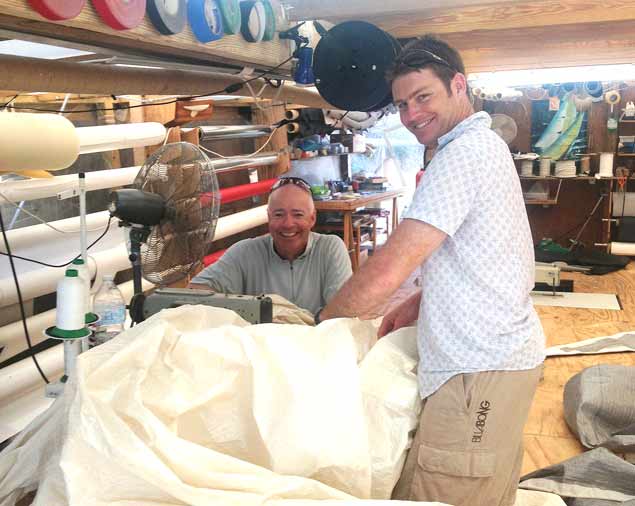 Nigel Young (left) and Jeremy Elliott repairing an A-Zero on a charter First 40 in St Barts in the Caribbean
Nigel Young (left) and Jeremy Elliott repairing an A-Zero on a charter First 40 in St Barts in the Caribbean
The North Design Services headed up by Elliott is a team of sail design-engineers who specialise in optimising a yacht’s total performance.
“We’re getting invitations from yacht designers to help them look at different optimisation options,” says Elliott. “Some underwater, some over the water, some both, our team is tasked with figuring out how to get the most performance out of these boats. It’s a real privilege for us to be trusted by the designers, owners, and teams to help optimise performance of their projects.”
Read more about Jeremy Elliott's role at North Sails here
North Sails Ireland Team Coaching in Norway & Howth Yacht Club
2016 Melges 24 World Champion Maurice "Prof" O'Connell & Nigel Young from North Sails Ireland were invited to Bergen in Noway to run a 'Speedcamp' for the Scandinavian fleet last weekend.
Over 50 sailors took part over the three day event.
The clinic focused on boathandling techniques (tacks, gybes, sets, drops, acceleration and deceleration) and straight line boatspeed (upwind and downwind).
Prof was using his experience from the successful five year 'Embarr' campaign that led to his World Championship win in December 2016. Nigel has been racing at a high level in the class since the mid-90s.
Video footage was shot each day and the de-briefs in Askoy YC were 'packed to the doors', according to Prof.
Practice start video:
Nigel & Prof Interview in Norway video:
This weekend the North Sails Ireland team are looking forward to coaching on the water in Howth YC for the Spring Warmer series. Again, video analysis will be used on the day to assist in the de-briefs ashore after sailing and it is expected that sail trim, crew manoeuvres, race strategy and starting techniques will be hot topics! First gun in Howth is at 1057 this Saturday.
New Sunfast 3600 Takes Maiden Voyage for North Sails Test
Brendan Coghlan's new Dublin Bay based Jeanneau Sunfast 3600 took to the water recently for her maiden voyage.
North Sails Ireland's Maurice 'Prof' O'Connell and Nigel Young and were afloat with Brendan's team, testing the full inventory of sails that they supplied with the boat.
As Afloat.ie reported in March, the Sunfast 3600 was delivered and launched by MGM Boats in time for the 2018 ISORA and Bay season that kicks off later this month.
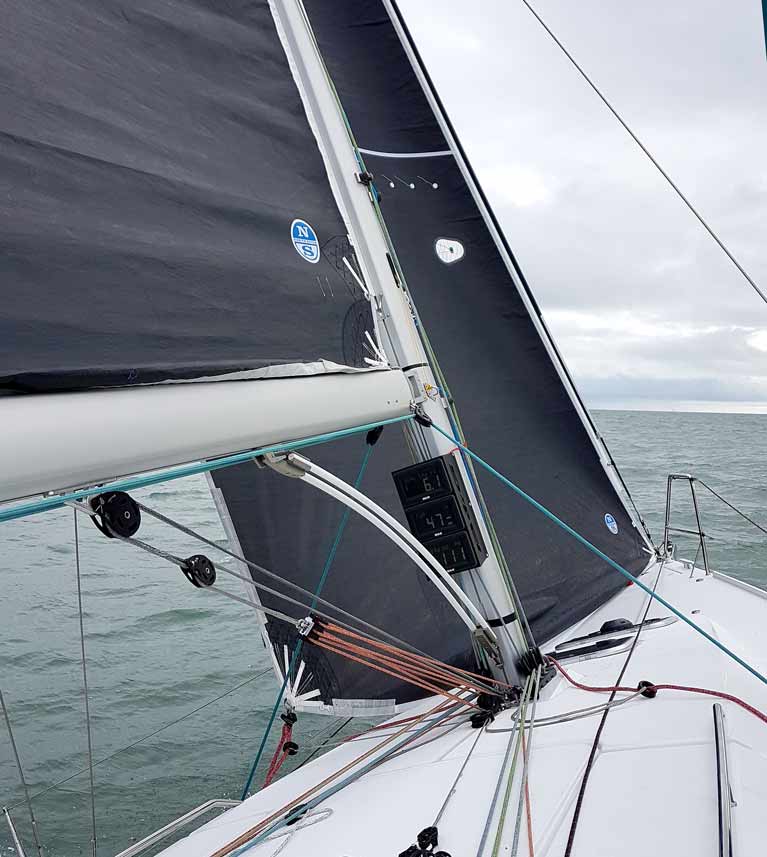 YoYo's Main and Code 2 medium air jib
YoYo's Main and Code 2 medium air jib
The session was broken into two sessions - in the morning the mainsail and Code 2 (medium air) jib were checked and tested. The A2 (light medium asymmetric running spinnaker) was also tested with the North Graphics-applied "Coghlan's Artisan Bakers" logo displayed on the 0.75oz sail.
Ross O'Leary and Joss Walsh from MGM boats were aboard for the morning session.
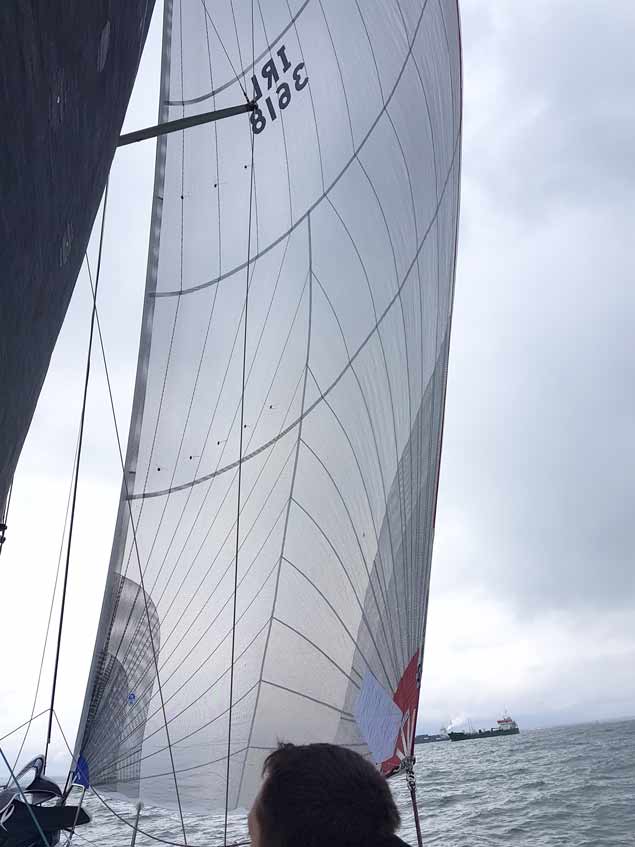 Yoyo Furling Code Zero in North Aramid Laminate
Yoyo Furling Code Zero in North Aramid Laminate
At the break, rig tune and control systems adjustments were made before heading back out on the water.
In the afternoon, the Code 1 (light air) jib, Code 3+ (heavy air reefable jib), A4 (heavy runnng asymmetric spinnaker), A5 (very heavy air all-purpose spinnaker) and "Code Zero" (light airs close reaching sail) were all hoisted, checked and tested.
The Upwind sails were manufactured using North proprietary "3Di" technology. The Code Zero was manufactured in North Fabrics aramid laminate. The spinnakers were manufactured in premium Contender Superkote coated nylon. The sails were custom designed specifically for the "YoYo" team usage using North's proprietary design software.
All the sails were photographed for analysis.
Here is a short downwind video from onboard:-
A North Sails Ireland 'Sail Trim simulator' will be used during post race de–briefings at the ICRA Nationals this August in Galway. The new tool helps to 'make sense of sail trim, fundamentals of sail shape, and understand how these variables impact performance', according to Nigel Young of North Sails in Cork Harbour.
North Sails Designer Max Tringale, based out of Portsmouth, Rhode Island, USA is working on the exciting new project that will help to better educate sailors on sail trim. Max has a very defined background in boat building, marine systems engineering, and yacht design. Along with the North Sails design team, Max is building an easy-to-use application called Sail Trim Simulator.
The North U. Sail Trim Simulator is being developed to help clients visualise how sails and rig interact together and how that relationship is manipulated by the different sail controls to achieve desired sail shapes. “We currently have two sail models, the TP52 and J/35, loaded into the simulator,” explained Tringale.
The Sail Trim Simulator is particularly suited for one design sailing, where it can be used as part of North Sails tuning guide to further explain rig set up and tuning. When supplied with various rig settings and tensions, the tool provides a visual aid to show why North recommends particular settings. The app provides targets for rig adjustments and trim settings before even getting on the water.
 User optionality for viewing angles to see the slot of the genoa and mainsail and what the leech looks like from the top down view, showing flatness of the sail when the trim is applied.
User optionality for viewing angles to see the slot of the genoa and mainsail and what the leech looks like from the top down view, showing flatness of the sail when the trim is applied.
“We’re looking at seven different control factors; mainsheet, backstay, traveler, cunningham, jib sheet, jib lead, and jib luff tension,” explained Tringale. “For each one of those controls, we are developing optimum sail shapes. We identify the optimum for each control point, understand how it is correlated with the other points, and then define optimum sail shapes for each wind speed. Other controls like rig tension and mast rake are left standard at this time to simplify the tool.”
When the user opens the application they will notice that each control point has a working range. For example, if you want to pull on more backstay tension, you can adjust in millimeter increments and watch as the output numbers change. The app has a function called the Magic Wand, allowing the user to set a desired TWS [true wind speed] and having the app find the optimum upwind boat trim for that wind speed. Also shown is the VMG [velocity made good] and TWA [true wind angle] the boat is sailing at, showing optimum sail trim.
For more on the simulator click here.
North Sails Designer Profile: JB Braun
JB Braun is the North Sails Director of Design and Engineering and one of the world’s leading sail designers. His designs have won the America’s Cup and Volvo Ocean Race, as well as Olympic medals.
JB Braun loves making sailboats go faster, and that’s his job as Director of Design and Engineering at North Sails. “There’s a lot that goes into it,” he says. “It’s not only developing a product but developing the tools and software to help create it.”
JB manages the 80-person worldwide design team for North Sails. “I’m trying to develop and bring more communications, more design expertise into it. I want it to be recognised because it’s part of what makes North Sails different.
“We have 80 designers around the world, mostly working independently. In the past few years, we’ve implemented some great systems that help our design team be more efficient, which allows more time for collaboration and creativity. Exploring the design space will provide more performance for our customers.”
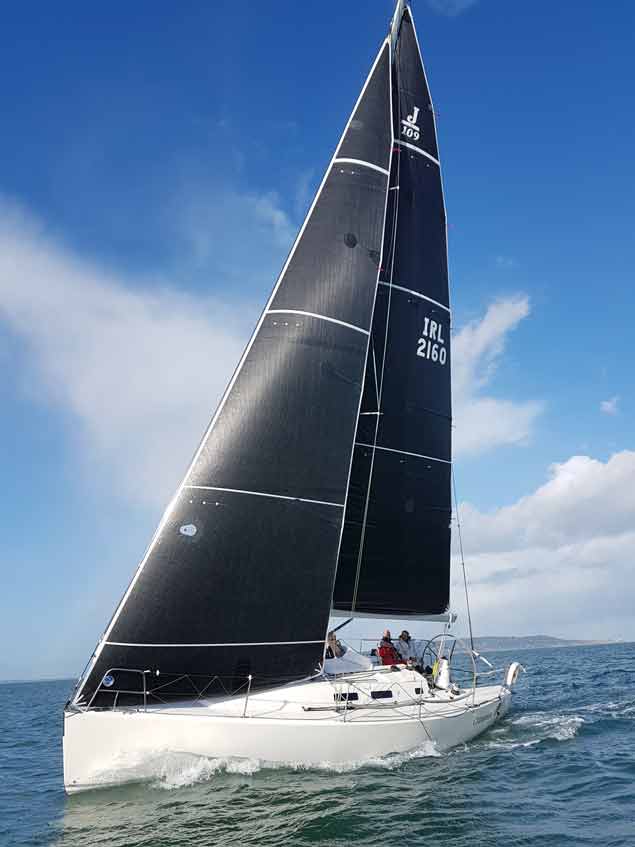
Before taking on his current role, JB was part of the design team for Oracle Team USA, helping to create the revolutionary foiling cats that defended the 2013 America’s Cup. JB was also instrumental in teams adopting 3Di during the Volvo Ocean Race 2011-12. “My job now is to try to take those skills and that type of development and bring that back into North Sails. Our process is the engine above the waterline, which is making boats perform better and increasing the enjoyment for our customers.”
JB’s on-the-water sailing career includes a cabinet full of youth trophies, two Team USA Olympic campaigns in the Flying Dutchman, and a Transatlantic record onboard Nicorette. Educated as a Mechanical Engineer at Northeastern University (Boston, USA), JB combined his passion for sailing with his engineering background to develop software and products that lead to faster sails. Today he is one of the world’s leading sail designers, having served as lead designer for various America’s Cup and Volvo Ocean Race teams and helping boats like the 100’ Comanche break records.
JB has helped revolutionize upwind/downwind sail design. In 2000 he developed Virtual Wind Tunnel, a program within the North Design Suite that made possible the first accurate simulation of downwind sails in action. Ten years later, he became the project leader for 3Di, developing and integrating sail design and construction techniques into the North Sails production line. “I helped bring 3Di from an idea that was not really a product into a mainstream product,” he explains. “The proof of concept for 3Di was the Volvo Ocean Race 2011-12. The product proved itself able to stand up to the brutal conditions of that race, and has since gone on to be further proven as the highest performance and most durable sail in the industry.”
Now that 3Di is sought after by both racing and cruising customers, JB is working on several new innovations. “We’ve changed MemBrain™, our finite elements analysis (FEA) tool, to engineer and analyze the winged sail combination that Team New Zealand is trying to apply for the next America’s Cup,” he says. “We’re also working on what we call the Sail App for North U, to help people better understand sail shape. You’re sailing along, you pull on the backstay, and you can see the performance change as you change sail shape. It’s still in the development phases, but I believe it’s the next step in how we communicate, both internally and with our customers.”
Other development projects include new velocity prediction (VPP) tools for the TP52 class. “That’s the premiere racing class right now,” he says. “We have some specific tools we’ve developed in the North Design Suite to help us quantify differences in design.”
What excites JB the most is making sails perform better, and he sees a fantastic opportunity in North’s fully integrated design approach.
“We’re unique in the industry because we design and analyze the sails with our North Design Suite software, and then use those same tools to physically build the 3Di sails. When we go through our analysis process, we have complete confidence that what we’re designing is actually what gets built and delivered to our customers. The design of the sail will have a huge impact on the performance of the boat.”
Industry experts like naval architects, engineers, and project managers now rely on North Design Services for information that will help them design and build faster boats. “From the very concept of a boat,” JB explains, “we’re helping these professionals by providing design software and tools to do a better job in their area of expertise. All these things start off as a concept or idea. North Sails helps grow that into a final product.
“Historically, a naval architect would design the hydrodynamic model, then ask for the aerodynamics,” he continues. “For us to do a really good job with the sail plan, we need to balance the two. It’s a seesaw, with aero on one side and hydro on the other. When the seesaw is balanced, you get the best performance, so if you start off with the seesaw at the beginning, the design loop gets much more refined. Change the hydro to balance with the aero. Design refinement before the boats get made.
“The IC37 by Melges is a perfect example. It went through design revisions and we developed aero models before the boats were even laid up.”
Naval architects and designers are finding this information so valuable, they’re coming back and wanting more.
Based in Marblehead, MA, JB Braun combined an engineering background with a lifelong passion for sailing and fast boats into revolutionary aerodynamic solutions for performance-oriented sailboats. JB got his start working for Ted Hood and Robbie Doyle and twice campaigned for USA Olympic selection. In 2000 he developed Virtual Wind Tunnel, a computer-based coupling of computer codes with Finite Element Analysis that accurately simulates downwind sail designs. Ten years later, he became North’s project leader for 3Di and took responsibility for structural engineering and analysis, as well as integrating design and construction techniques of 3Di technology into the North Sails product line. In 2016, he developed Sail “APP,” the leading edge in advanced sail performance prediction tools. Along the way he helped design sails for winning programs like Comanche, ORACLE Team USA, and Abu Dhabi Ocean Racing.
Win a North Sails Holdall In This Free To Enter North Sails Ireland/Afloat.ie Competition (NOW CLOSED)
North Sails Ireland is giving away one of its famous holdalls in this free to enter competition with Afloat.ie.
THIS COMPETITION IS NOW CLOSED
The new holdall is part of the new North Sails Tech clothing range that celebrates 60 years of original sailmaking expertise.
All you have to do is answer one simple question from an article about North Sails and its leading sail designer. Click here to read the article.
 A Dublin Bay J-109 powering upwind with 3Di RAW Sails
A Dublin Bay J-109 powering upwind with 3Di RAW Sails
To be in with a chance to win the prize, answer the question below.
Question: Who is the director of Design and Engineering at North Sails?
Email your answer, together with your name, age and postal address to [email protected] using 'North Sails Ireland Holdall' in the subject line.
_______________________________________________________________
Terms and Conditions
– Closing date for entries is midnight 12th April 2018
– Overall winner will be announced on 13th April 2018
– Upon submitting their entry the entrant acknowledges that their details will be used for Afloat.ie ezine and North Sails Ireland updates.
– Entrant must be over 18 years of age.
– Entry to the competition is free. No purchase is necessary.
– The promoter is excluded from liability for any loss, damage or injury which might occur to the winner arising from his or her acceptance of the prize.
– By entering this competition you are agreeing that any submissions made become the property of Afloat.ie
– The promoter reserves the right to amend these terms and conditions.
– These terms and conditions shall be governed by the laws of Ireland and subject to the jurisdiction of the Irish Courts.
– Employees or agents of Afloat.ie, any associated group companies, prize sponsor and or agencies associated with this competition and their immediate families are ineligible to enter. Any such entries will be invalid.
– The judges decision is final. No correspondence will be entered into.
_______________________________________________________________




























